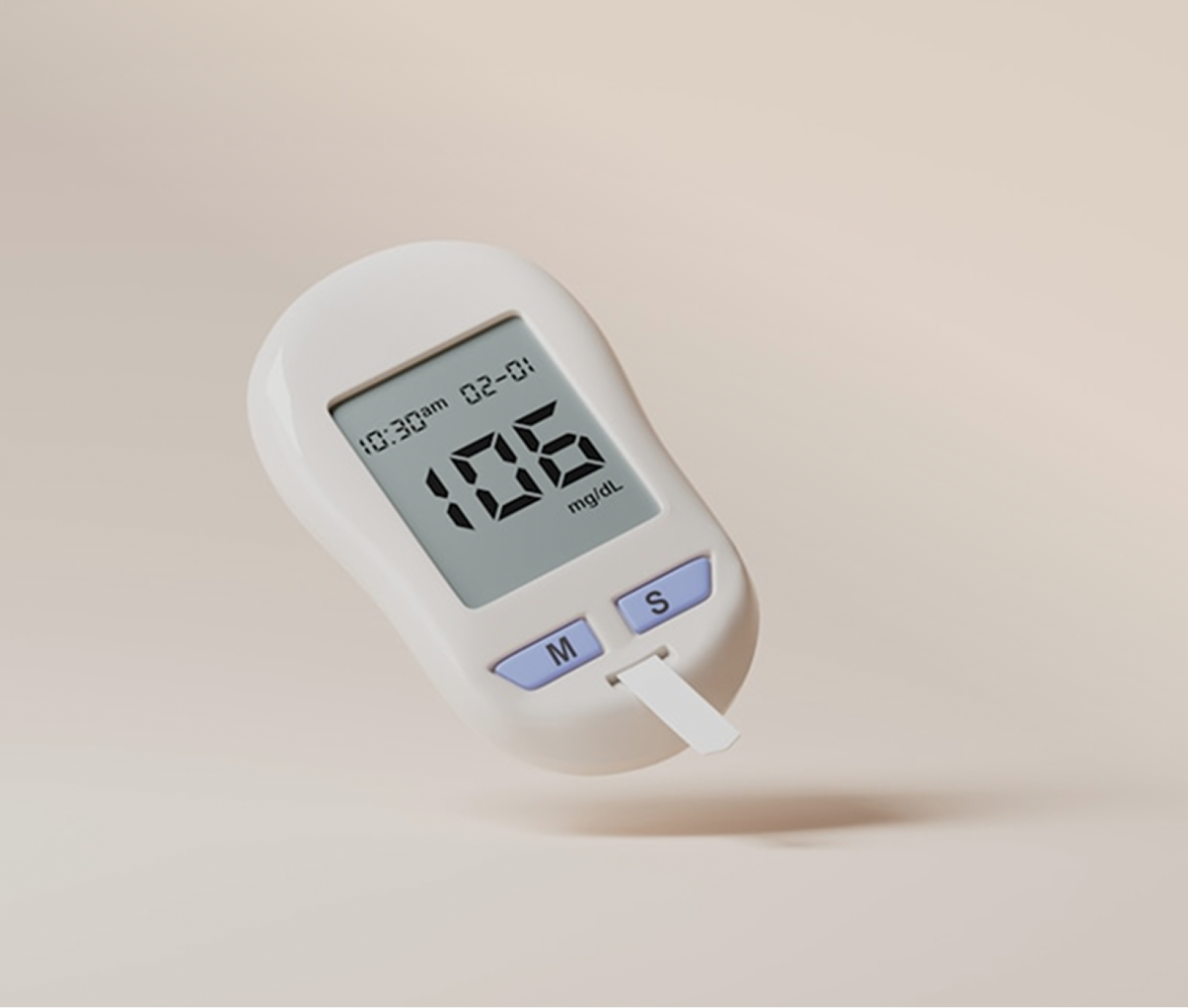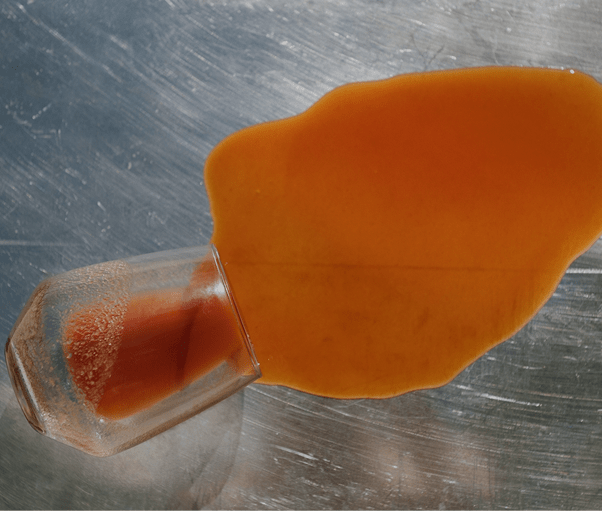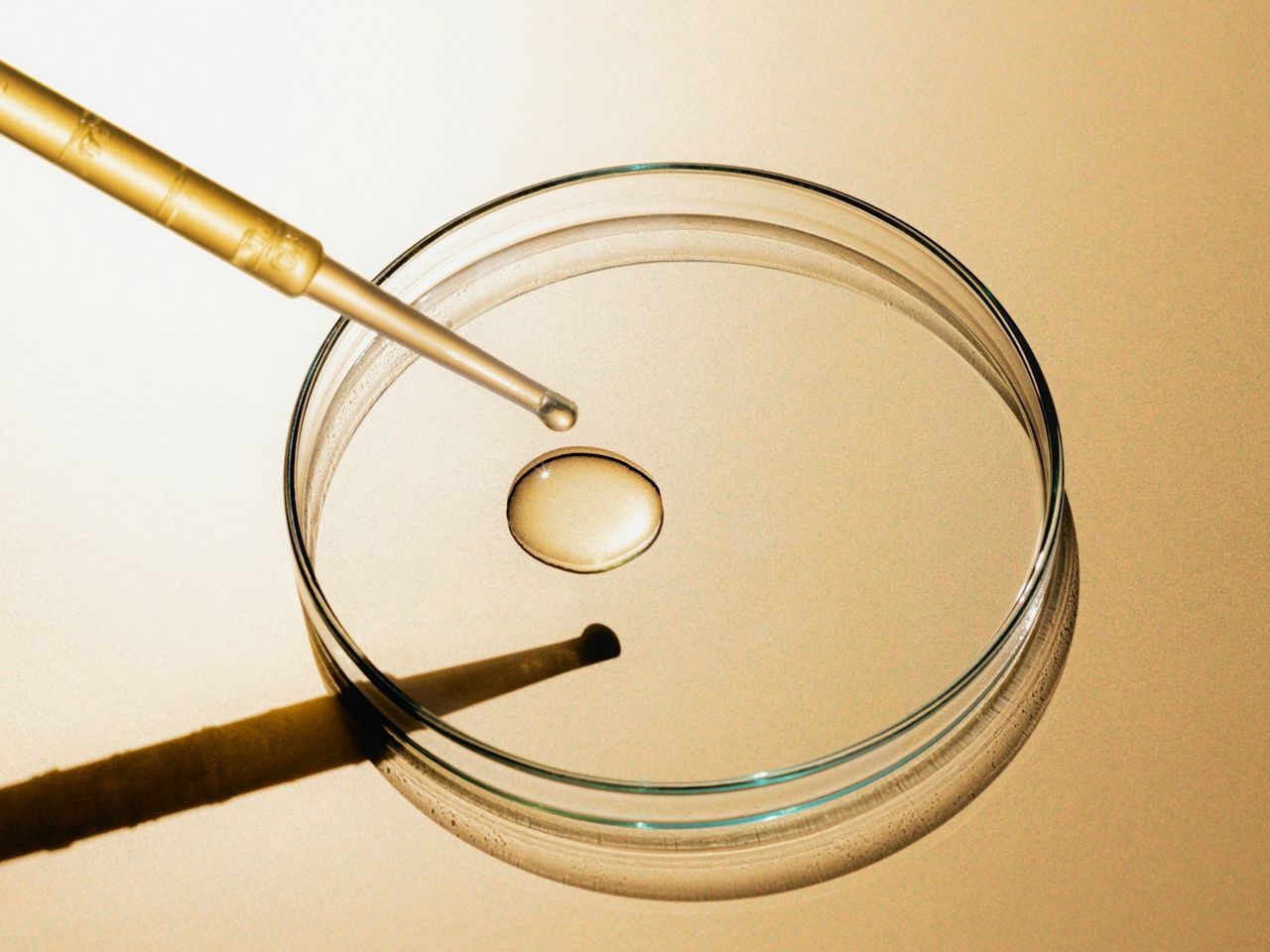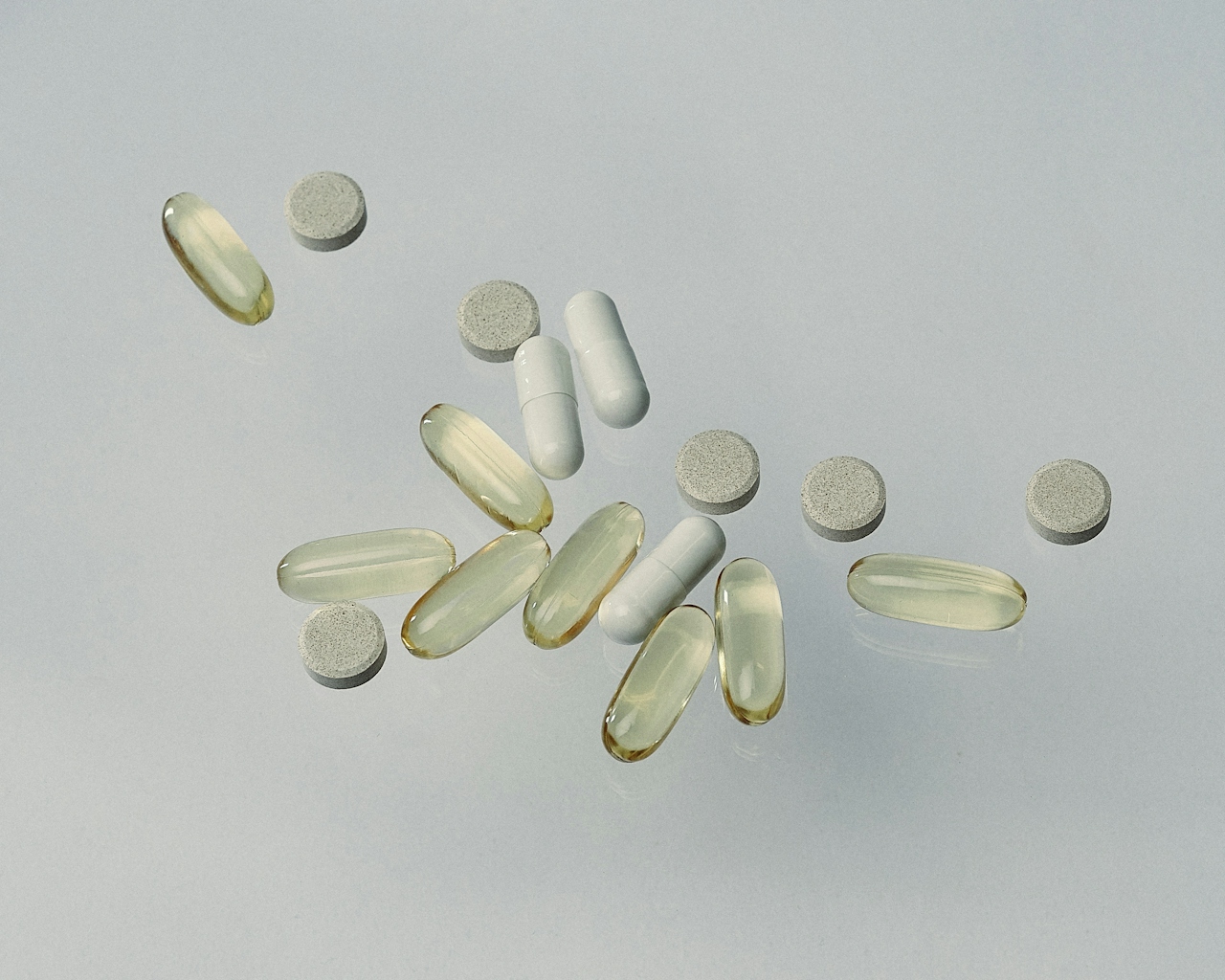
This macronutrient, this building block of all human existence, is having a moment. These days, it’s in everything. All your favorite products boast about it. It’s in your pancakes, yogurt, chips, bagels—even your water. It’s being debated in all your feeds. It’s being hyped as the key to longevity, muscle growth, and satiety—while also sparking endless debates about how much is enough, what sources are best, and whether we’ve all become a little too obsessed.
Few nutrients have sparked as much discussion, debate, and downright confusion. It’s…
PROTEIN.
But what's actually supported by evidence? When did protein become such a contentious topic, and why does it matter to you? If you look hard enough (or at all), you’ll find research and data backing both sides of any argument. Social media amplifies this, with talking heads cherry-picking data to fit their narrative while ignoring the broader scientific context.
The truth? It’s not a one-size-fits-all equation. Your needs depend on your body, lifestyle, and goals.
But muscle mass is a cornerstone of healthy aging, and adequate protein intake is critical for preserving strength, mobility, and resilience over time. When longevity is the goal, prioritizing protein isn’t optional. It’s foundational. Understanding how to optimize protein is one of the most impactful things you can do for long-term health.
PROTEIN’S ROLE IN YOUR BODY
Protein is a macronutrient made up of chains of amino acids. Unlike carbohydrates and fats, your body doesn’t store protein in a dedicated reserve. Instead, it maintains a small, dynamic pool of free amino acids. This means we need to consume protein regularly through our diet to meet our body’s needs.
Your body uses 20 different amino acids to build the proteins it needs, nine of which are classified as “essential,” meaning your body can't produce them on its own. These essential amino acids are the ones we must get through food.
Protein is fundamental to nearly every process in your body. At its core, protein drives tissue repair and muscle growth, providing the raw materials needed to rebuild after exercise or injury. But its role goes far beyond muscle—protein is the backbone of your hormones and neurotransmitters, directly influencing your energy, mood, and overall well-being.
Your immune system relies heavily on protein, using it to create antibodies that identify and fight off infections. Structurally, proteins like collagen and keratin form the building blocks of your skin, hair, nails, and bones, while specialized proteins act as enzymes, orchestrating countless chemical reactions throughout your body.
Protein also plays crucial roles in transportation and regulation. Hemoglobin, a protein in your blood, carries oxygen to your tissues, while other proteins maintain fluid balance and regulate your body's chemistry. These protein-powered processes are so essential that without them, none of your cells could function properly.
HOW MUCH PROTEIN SHOULD YOU EAT—AND WHEN?
The debate over optimal protein intake continues to evolve, with research consistently suggesting we need more than the standard Recommended Dietary Allowance (RDA) of 0.8 grams per kilogram of body weight.
A 2022 meta-analysis found that consuming at least 1.6 grams of protein per kilogram of body weight per day (1.6g/kg/day) offers significant benefits, especially when combined with resistance training. Experts like Dr. Layne Norton and Dr. Peter Attia recommend even higher intakes: 1.6–2.2g/kg/day for general health and up to 3.0g/kg/day for specific goals, such as building muscle or enhancing performance.
Let's break down the latest recommendations.
Average Adult
If you're generally healthy and moderately active, aim for a daily target of 1.6–2.0g of protein per kg of body weight spread across 3–4 meals.
Athletes and Active Individuals
If you're training regularly or trying to build muscle, aim for 2.0–2.4g/kg for muscle gain and 2.4–3.0g/kg during fat loss phases 4 times daily.
For athletes and consistent exercisers, while post-workout nutrition matters, the traditional notion of a narrow 30-minute “anabolic window” is outdated. Research shows that the anabolic window might be open anywhere from 90 minutes to 24 hours post-workout. And if you've eaten a meal containing protein and carbs within about three hours before your workout, the need for immediate post-workout protein is reduced.
Total daily protein intake is more important than perfect post-workout timing.
Adults Over 50
As we age, our bodies become less efficient at processing protein, a condition known as anabolic resistance. This means older adults often need more protein than younger individuals to achieve the same muscular response. Combining regular resistance training with adequate protein intake becomes increasingly important with age, as it helps maintain muscle mass and function, supports bone health, and contributes to overall mobility and independence.
Aim for 1.2–1.6g/kg and1.6–2.0g/kg for those doing resistance training spread throughout the day.
Key Takeaways
Aim for more than the standard RDA of 0.8g/kg with protein distributed across multiple meals. Higher intakes are beneficial during fat loss and should be combined with resistance training for best results. Older adults may need more protein to maintain muscle mass
These are general guidelines. Your individual needs may vary based on activity level, goals, and overall health status.Start at the lower end of these ranges and adjust based on your results and how you feel.
A DEBATE ON THE IMPACT ON LONGEVITY
Since we’re here and we’re looking at all the science, there is a camp of experts who believe protein restriction is important for longevity and avoiding diseases like Alzheimer’s, and there is evidence that suggests chronic high protein consumption may accelerate aging.
mTOR is a protein kinase in your cells that regulates growth, metabolism, and muscle development. It’s especially responsive to protein intake, particularly from animal sources. While activating mTOR is essential for muscle growth, longevity expert David Sinclair recommends mTOR suppression, as too much could turn off your natural defenses against aging and disease.
High protein intake is also associated with lower levels of NAD+, which could be a concern because NAD+ is crucial for powering sirtuins—proteins that help your cells repair themselves and maintain youthfulness.
But of course, there is ongoing debate in the scientific community about all of this.
PROTEIN’S ROLE IN WEIGHT MANAGEMENT AND APPETITE CONTROL
Protein is considered the most satiating macronutrient, promoting greater feelings of fullness compared to carbohydrates and fats. This effect works through multiple pathways.
- Hormonal Impact: Protein consumption triggers the release of satiety hormones GLP-1, PYY, and CCK while reducing levels of ghrelin, the hunger hormone.
- Thermic Effect: Protein has the highest thermic effect of feeding, meaning your body burns more calories digesting protein than other macronutrients.
- Blood Sugar Stability: Protein helps stabilize blood sugar levels, reducing cravings and energy crashes that can lead to overeating.
Studies show that increasing protein intake to 25–30% of your total daily calories can reduce appetite and daily caloric intake by 400–500 calories, leading to weight loss without conscious calorie restriction. However, the relationship between protein intake, satiety, and weight management is complex and can vary based on individual factors, diet, and long-term consumption patterns.
The Leucine Threshold
Leucine, one of the nine essential amino acids that we must obtain from food, acts as your body's “on switch” for building muscle. It has about a 10-fold greater impact on protein synthesis than any other amino acid.
When you eat protein, your body is looking for about 2–3 grams of leucine per meal to flip that switch and start building muscle. Whey protein is particularly good at triggering muscle growth because it's rich in leucine, while some plant proteins might need to be eaten in larger amounts to get the same effect.
Each meal should contain enough leucine to trigger that muscle-building switch.
PLANT VS. ANIMAL: THE PROTEIN BATTLE
Protein experts generally fall into two camps: pro-animal or pro-plant. Proponents from each group cite studies, data, and research to back up their claims, often leading to polarized debates about which source of protein is superior.
Let’s explore each side below.
The Animal Protein Perspective
Animal proteins have long been considered the gold standard for muscle building and recovery, and several unique characteristics make them particularly efficient for this purpose.
Bioavailability and Absorption
Animal proteins demonstrate high bioavailability—the degree to which your body can absorb and utilize the protein. This efficiency stems from their amino acid composition, which contains all essential amino acids in proportions that align well with human physiological needs.
Bioavailability rates for common animal proteins:
- Whey protein: 95–99%
- Egg protein: 94–98%
- Meat proteins: 90–95%
- Fish: 94–96%
- Casein: 92–94%
The high bioavailability means that when consuming animal proteins, you typically need less total calories to achieve the same physiological effect as plant sources.
This protein-to-calorie ratio makes animal proteins particularly valuable for athletes and individuals monitoring their caloric intake.
One of the key advantages of animal proteins is their varying absorption rates, which can be strategically used throughout the day:
- Whey protein: 60–90 minutes, ideal for post-workout
- Egg and meat proteins: 2–3 hours, perfect for main meals
- Casein: 5–7 hours, optimal for overnight recovery
While the strategic use of different protein sources throughout the day can be beneficial, research still suggests that total daily protein intake is more important than precise timing for most individuals.
The Leucine Advantage
Perhaps the most significant biochemical advantage of animal proteins is their leucine content. Whey protein, derived from milk, contains 11–12% leucine, making it the highest natural source of this crucial amino acid. Most other animal proteins contain between 8–10% leucine, still providing enough to effectively trigger muscle protein synthesis in relatively small portions.
Animal proteins typically reach the leucine threshold with smaller portions compared to plant sources, making them especially efficient for muscle building and maintenance.
Research indicates that somewhere between 2.5–4g of leucine per meal optimally stimulates muscle protein synthesis. Here are some examples:
- Chicken breast: 2.5g of leucine per 100g
- Cottage cheese: 1g per 100g
- Salmon: 2g per 100g
- Eggs: 1g per 2 large eggs
- Whey protein: 2–3g per scoop
Nutrient Density and Micronutrient Profile
Animal proteins provide essential nutrients that are either absent from or less bioavailable in plant sources, specifically vitamin B12, iron, and zinc.
Heme iron, found only in animal products, is more bioavailable than the non-heme iron, which is found in plant foods. This becomes important for athletes—particularly female athletes, who often have higher iron requirements due to training demands and menstrual losses.
Animal proteins offer unique benefits through their nutrient density and bioavailability. The key is choosing high-quality sources like fish, lean meats, and dairy while limiting processed meat.
The Plant Protein Perspective
Recent scientific research has altered our understanding of plant proteins, dismantling long-held misconceptions and revealing their potential for supporting muscle growth, recovery, and overall health. This evidence-based perspective challenges closely held traditional views.
The “Complete Protein” Myth
The traditional narrative around plant proteins—that they're "incomplete" or inferior to animal sources—has been debunked. Plant proteins typically have lower concentrations of one or more essential amino acids compared to animal proteins. However, they are not "missing" these amino acids entirely.
This understanding changes how we approach plant-based protein consumption.
The body efficiently pools amino acids from different meals throughout the day. The old advice about carefully combining proteins at each meal (known as protein complementation) is unnecessary. Your breakfast's amino acids work with those from your lunch and dinner. There's no need for perfect combinations at every meal.
Consuming a variety of plant-based proteins throughout the day ensures adequate intake of all essential amino acids.
Here is a list of 13 complete protein sources, in adequate amounts, from plants.
Bioavailability and Absorption
Animal protein proponents argue that some plant-based protein is bound within fiber, which humans cannot digest, potentially reducing its bioavailability. However, modern protein quality assessment methods have revealed that many plant proteins have higher bioavailability than previously thought. When cooked, plant protein bioavailability can increase up to 18%.
Key bioavailability rates for plant proteins:
- Soy: 90–95% bioavailability, matching or exceeding many animal proteins
- Potato protein isolate: 90–95%, particularly rich in branched-chain amino acids
- Pea protein: 85–90%, with enhanced absorption through modern processing
- Legumes (cooked): 80–90%, with higher rates achieved through proper preparation
- Hemp protein: 80–85%, offering additional benefits from omega-3 fatty acid
At higher protein intake levels (around 30% of calories), research tells us there is no significant difference between animal and plant protein sources for muscle building.
A Brazilian study compared vegans and meat-eaters consuming 1.6g protein per kg of body weight while resistance training for 12 weeks. The results showed no statistically significant differences in muscle and strength gains between groups. Similar findings emerged from a 2023 study using plant-based protein products, demonstrating equivalent results to animal protein when total protein intake is matched.
These findings support the statement that plant-based protein can be as effective as animal protein for building muscle and strength when total protein intake is matched.
Plant-based protein sources still provide leucine. Here are a few examples:
- Corn protein: almost 3g of leucine per 30g
- Soy: 3.3g per 100g
- Lentils: 1.8g per 100g
- Black beans: 1.7g per 100g
- Peanuts: 1.7g per 100g
Long-Term Health Benefits of Plant Protein
While plant proteins effectively support muscle growth and athletic performance, recent research reveals their profound impact on longevity and health outcomes. A comprehensive systematic review of 12 studies involving over 1.4 million participants demonstrated significant benefits when substituting plant-based protein for animal protein, particularly when replacing red and processed meat.
Reduced Mortality Risk: Replacing animal proteins with plant proteins was consistently linked to lower rates of both overall mortality and deaths from cardiovascular disease, with the greatest benefits seen when substituting for red or processed meat.
Improved Metabolic Health: A 23% reduction in Type 2 diabetes risk was observed when just 5% of energy from animal protein was replaced with plant protein.
Cancer Prevention: Substituting plant protein for red meat protein showed protective effects against colorectal cancer, particularly for distal colon and rectal cancers due to high fiber content.
Healthy Aging: Plant protein substitution was associated with fewer chronic diseases and healthier aging.
These benefits likely stem from the unique nutrient profiles of plant proteins, which provide not just amino acids but also fiber, antioxidants, and anti-inflammatory compounds. The evidence is compelling: plant-based proteins not only effectively support muscle growth and athletic performance but also offer significant advantages for long-term health and longevity.
The key to success lies in ensuring adequate total protein intake through varied plant-based sources throughout the day, rather than obsessing over protein combining or specific sources.
PROTEIN POWDERS: FRIEND OR FOE?
The old data told us that protein powders were most effective when paired with resistance and strength training, but a 2023 study showed a variety of benefits beyond muscle building. The 60 participants in the 90-day clinical trial tested a unique protein supplement that combines plant proteins (from rice, pea, and soy), dairy proteins, and probiotics, with several key findings while health markers remained stable:
- Dramatic improvements in daily energy levels
- Overall quality of life (85% improvement)
- Aerobic capacity (43% better oxygen utilization)
- Sleep quality (34% improvement)
- No digestive complaints, compared to their baseline scores and the placebo group, which showed minimal improvement.
Safety
The Clean Label Project, a nonprofit organization that tests and certifies consumer products for contaminants and toxins, released a study in January 2025 about the safety and quality of protein powders on the market. The study tested 160 protein supplements from 70 leading brands that represent 83% of the U.S. protein supplement market. What they found was surprising.
Of those tested, 47% of protein powders exceeded California's Proposition 65 safety limits for one or more heavy metals, including lead, cadmium, arsenic, and mercury. At certain levels, long-term exposure can lead to serious neurological, kidney, and developmental issues.
Plant-based protein powders were the most contaminated. This includes proteins derived from pea, rice, hemp, and soy. This trend highlights the possible role of soil contamination and agricultural practices, as well as the nature of the crops themselves in absorbing heavy metals from the environment. Chocolate-flavored powders showed the highest levels of contamination, possibly due to the use of cocoa, which can absorb heavy metals from soil.
Currently, there are no federal regulations specifically addressing heavy metal levels in dietary supplements, including protein powders. As the Clean Label Project states, this lack of oversight allows brands to set their own testing protocols, leading to inconsistencies in product quality and safety.
How to Choose the Safest Protein Powder
Look for Transparency in Testing.
Choose brands that provide third-party lab tested results for contaminants like heavy metals, pesticides, and toxins. Tests should be done along the way and on the finished product.
Check for Certifications.
Opt for products with certifications like NSF Certified for Sport, Informed-Sport, or USDA Organic, which indicate independent testing for safety and quality.
Know Where Your Protein Comes From.
Whenever possible, choose sustainably farmed protein sources with low contamination risks. Opt for brands that openly share sourcing details, as the good ones will often source from regions with stricter regulations and higher quality standards.
Pay Attention to Flavoring and Additives.
Choose protein powders with minimal ingredients and ones that contain natural sweeteners like stevia or monk fruit. Avoid chocolate flavors, which can have higher contamination levels.
Research the Brand’s Reputation.
Look for brands that are transparent about ingredient sourcing, manufacturing processes, and testing protocols.
COMMON PROTEIN MYTHS AND MISCONCEPTIONS
Myth: “You can't absorb more than 30g of protein in one meal.”
While muscle protein synthesis may be maximized at around 20–30g per meal, your body will absorb and utilize virtually all protein consumed, just for different purposes. In fact, a 2023 study found that protein doses up to 100g in a single meal led to much larger increases in muscle protein synthesis than a 25g protein dose.
Myth: “High protein diets damage your kidneys.”
For healthy individuals, research shows no evidence that high protein diets cause kidney damage. Multiple studies have demonstrated that even very high protein intakes (up to 3.3g/kg/day) don't impair kidney function in healthy people. This myth originated from the fact that people with existing kidney disease need to restrict protein.
Myth: “More protein always equals more muscle.”
There's a ceiling effect to protein's muscle-building benefits. While adequate protein is crucial for muscle growth, simply eating more won't automatically build more muscle. Without proper resistance training and overall caloric balance, excess protein will be used for energy or stored as fat. The key is finding your optimal intake based on activity level and goals.
FOCUS ON THE FUNDAMENTALS
Protein—it’s a lot. And we’re stilllearning more about it every day. The protein debate isn't likely to end anytime soon, but the fundamentals remain clear.
Maintain adequate intake spread throughout the day. Choose high-quality sources. Remain an informed consumer. Align your protein strategy with your personal health goals and values.
Your protein needs will change with your age, activity level, and health status. Regular reassessment of your intake and sources, along with attention to how your body responds, will help you optimize this crucial nutrient for your unique situation.
|
Disclaimer: This newsletter is provided for educational and informational purposes only and does not constitute providing medical advice or professional services. The information provided should not be used for diagnosing or treating a health problem or disease, and those seeking personal medical advice should consult with a licensed physician.

December 19, 2025

December 12, 2025

December 8, 2025

December 5, 2025

November 21, 2025

November 14, 2025

November 14, 2025

November 7, 2025

October 31, 2025
























































